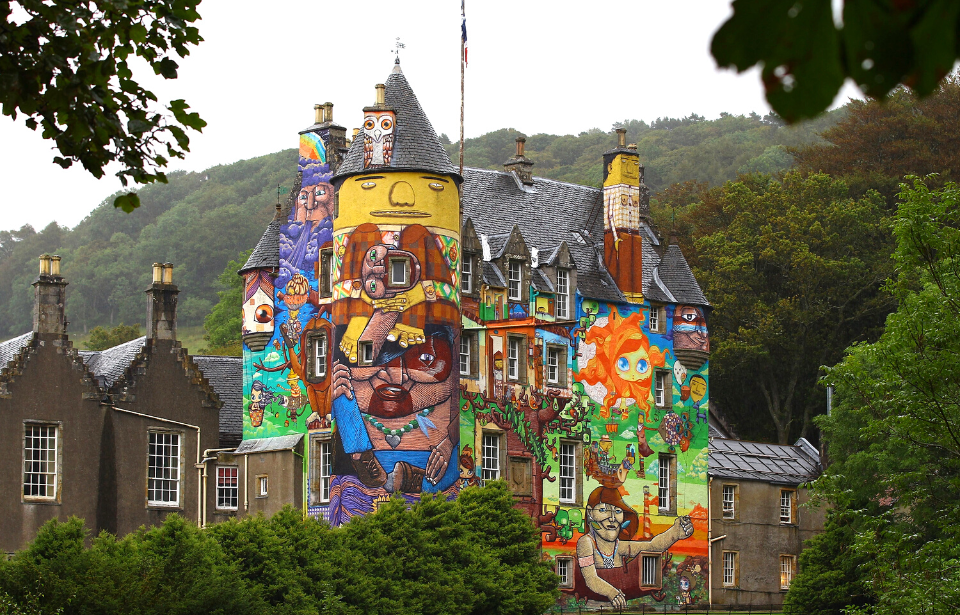Walking among the colorful graffitied grounds of Kelburn Castle, most wouldn’t have a clue that the 13th-century structure is the oldest castle still standing in Scotland. Not only are the exterior walls of the castle covered in graffiti, but the very man who owns the landmark invited a group of Brazillian graffiti artists to turn the castle into a vibrant masterpiece. Today, visitors from around the world come to marvel at the castle’s rich history and take in the unique artwork.
The history of Kelburn dates back 800 years
The land surrounding Kelburn Castle has been owned by the Boyle family since the 12th century. No one knows exactly when the castle was built, but some believe it was around 1143. The historical record of the Battle of Largs states that a wooden tower was on the site by 1263. The structure was eventually replaced with a Norman keep, a type of stone tower brought to England and Scotland by the invading Normans in 1066. Sections of the original keep are still in use today.
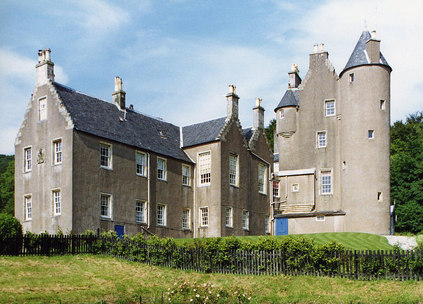
The stone castle surrounding the keep was built in 1581, and the style of masonry used mimicked the style of the original tower, making the two buildings impossible to differentiate even though they were built 400 years apart.
The first Earl of Glasgow, David Boyle, was appointed in 1703 and soon took Kelburn Castle on as his own improvement project. Boyle began building the northwest wing of the castle, which was completed in 1722. His additions included a William-and-Mary style mansion, the same architectural style that iconic British buildings like Kensington Palace and Hampton Court were built in. This was added to the castle at a slight angle which doubled the size of the property.
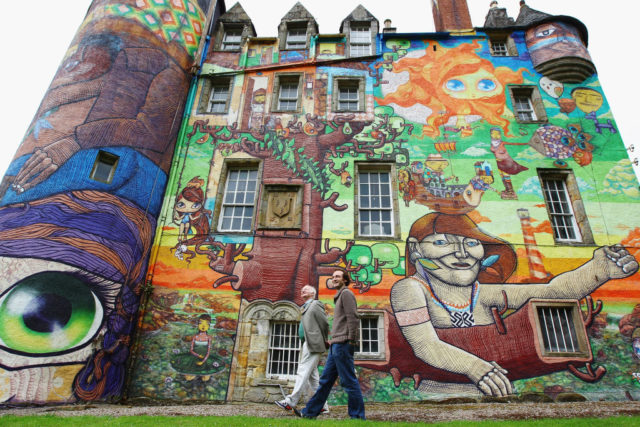
His descendant George Boyle added the northeast wing in 1880. Today, the 10th Earl of Glasgow Patrick Boyle continues his family’s legacy at Kilburn Castle but with a modern and unorthodox twist.
A colorful approach to conservation
Experts approached the Boyle family in 2007 with concern about the condition of the castle’s concrete exterior, which was slowly decaying. The concrete facing protects the ancient stonework that lies underneath from any further wear or damage as it lies exposed to the elements, and replacing it would be an expensive undertaking.
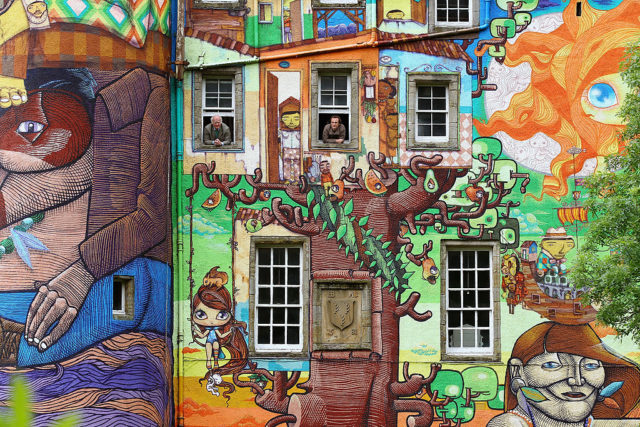
Boyle’s children approached their father with an interesting idea: why not invite graffiti artists to re-invent the exterior of the castle? The art could be used as an attraction to draw in new visitors and increase revenue to help raise more money to preserve the landmark for future generations.
Historic Scotland, a heritage conservation authority that oversees castles like Kelburn, also agreed to the unconventional project on the condition that the graffiti would one day be removed when the castle’s protective concrete exterior, known as harl, was replaced.
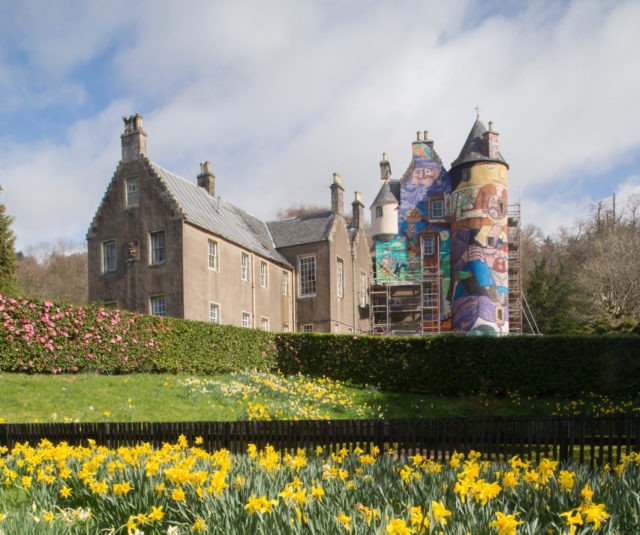
Four Brazilian graffiti artists, Nunca, Nina, and the Os Gêmeos twins, were brought to the castle to work their magic.
In 2011, the Earl of Glasgow and Historic Scotland officially made the murals a permanent fixture of the castle – much to the dismay of some conservationists who see the graffiti as an inauthentic change to the castle that threatens its historic value. Art lovers, on the other end, have celebrated the graffiti at Kelburn. For example, stencil and graffiti art expert Tristan Manco listed the castle as one of the top 10 best examples of street art in the world.
Kelburn Castle offers more than just art
Even if you don’t find graffiti all that interesting, Kelburn Castle is a must-see sight with something for everyone. The Earl of Glasgow, who still resides inside the castle with his family, opened the estate to the public in 1977. The grounds, gardens, and outhouses were converted into play areas, and the other estate buildings and the stables were converted into a tea room, gift shop, and visitor center.
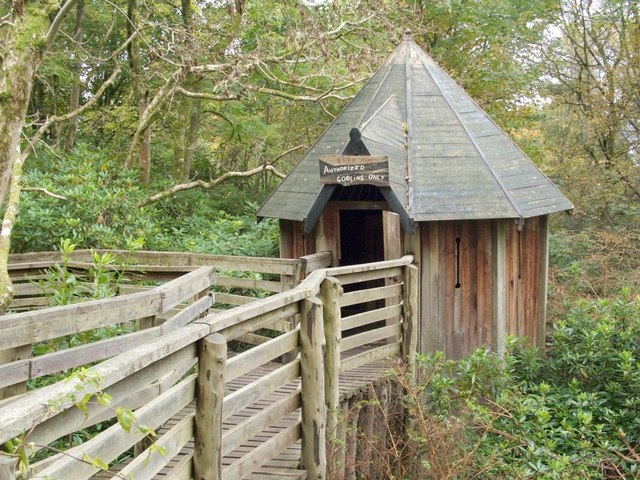
More from us: 10 Real-Life Fairytale Castles in Europe
Visitors can tour the castle’s interior or explore the grounds which include the Secret Forest, a fairy tale-inspired trail through the nearby woods. There is also a Wild Wild West Saloon, indoor play barn, and adventure course.
